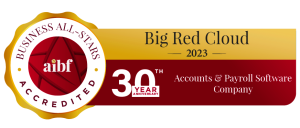Sudden extreme weather conditions can have you running for cover. But what does this mean for your business? Are you prepared for rain, snow, or hail as this will affect the running of your business?
With so much at stake, such as computer assets that hold all your data, you need a disaster recovery plan. Being prepared at all times can mean the difference between surviving adverse weather and failure. While you may not be in immediate danger, it is always wise to prepare for a worst-case scenario. Here are five ways to keep your business going in adverse weather conditions.
1. Backing up and storing critical data
Today businesses rely on the data they have stored to keep running. It is critical to have a backup plan as it would be a disaster to lose it all. When you have a plan in place, you can rest easy when disaster strikes. No matter whether threatened by power cuts or flooding, you have a copy stored for access to restore your data. Do not risk losing it all during an extreme weather event.
Assess your needs to understand what your high value data assets are. These can include customer information and accounting information. Work out how to store copies of these in the event of a disaster. Even consider working with an established data recovery provider as part of a disaster recovery plan. It is worth working with this sort of company as it will ensure you leave nothing out.
2. Do not overlook critical applications
Do not overlook critical applications in your disaster recovery plan. You will need to access these to restore the data you have stored. Without these applications immediately available it will cause the business downtime. Applications like accounting software and databases you need all the time. These should be available on the cloud and you may need a licence to use them in alternative locations and on different assets. This is especially if affected by flooding and you lose your office equipment.
3. Protect electronic equipment
It is important to protect your electronic equipment and ensure that bad weather will not affect it. Keep computers and phones as well as the cables high and dry by ensuring to prevent water from destroying them. A good habit is to switch off and disconnect all assets at the end of the day. Only leave critical systems operating to minimise your loss.
4. Use offsite servers
Small businesses can protect business data using the cloud for data storage. You can also use a hosted work space as part of your disaster recovery plan. This is a cost-effective way to back-up everything up with instant access to recover it. It also reduces the need to have onsite IT support and gives you instant access from anywhere. Doing this moves the responsibility for protecting your data to your service provider.
5. Hold disaster recovery practice sessions
Hold disaster recovery practice sessions so your staff know exactly what to do when adverse weather approaches. There is no point waiting for bad weather to test out whether your data recovery plan works. It is too late then. Practice sessions trains your staff to act at a moment’s notice. These will also show you if there are any areas left out of the plan so you can update it if necessary.
By planning ahead, it reduces the stress and increases the likelihood your business data will escape unscathed. It also guarantees you can get your business up and running again quickly no matter what happens. Now is the time to take action before it is too late.





